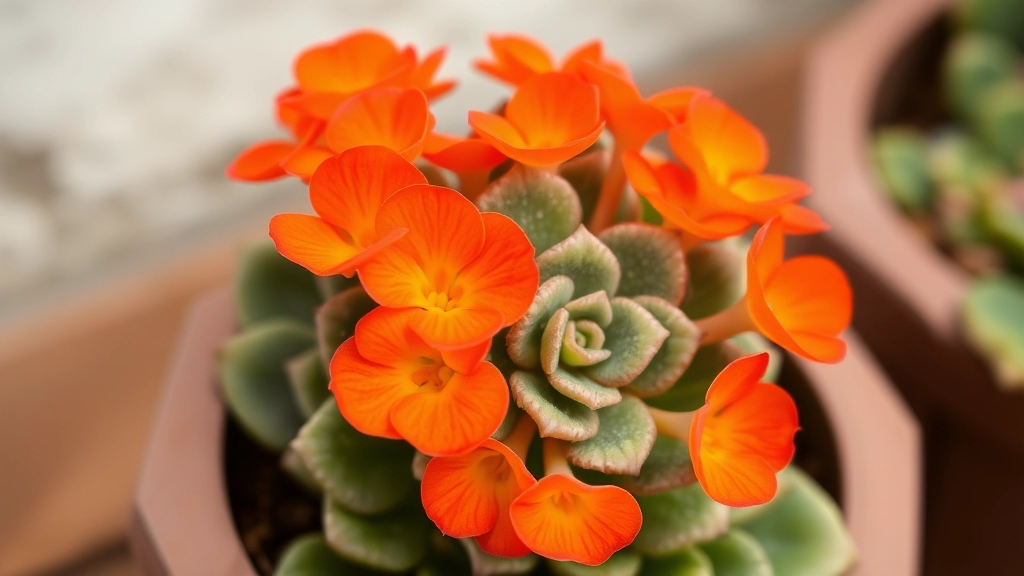Orange Flower Succulent Kalanchoe Care Guide
If you’re looking to add a pop of colour to your garden or home, the Orange Flower Succulent Kalanchoe might just be the perfect plant for you. This vibrant succulent is not only eye-catching but also incredibly low-maintenance, making it a favourite among both novice and experienced gardeners. In this guide, I’ll walk you through everything you need to know about caring for this stunning plant, from ideal light conditions to watering tips and more.
Best Environment for Your Kalanchoe
First things first, let’s talk about the best environment for your Orange Flower Succulent Kalanchoe. These plants thrive in bright, indirect light, so placing them near a window is a great idea. When it comes to soil, a well-draining mix is crucial to avoid root rot. Watering should be done sparingly, allowing the soil to dry out completely between waterings. With the right care, your Kalanchoe will not only survive but truly flourish, adding a cheerful touch to any space.
Overview of Orange-Flowering Kalanchoe Varieties
Are you looking to brighten up your space with vibrant blooms? The orange-flowering Kalanchoe varieties might be just what you need.
These succulents are not only visually stunning but also relatively easy to care for.
Popular Orange-Flowering Varieties
- Kalanchoe Blossfeldiana
- Known for its bright orange clusters.
- Often sold in pots and makes a great houseplant. For more care tips, check out our care tips for Orange Florist Kalanchoe Blossfeldiana.
- Kalanchoe luciae (Paddle Plant)
- Features large, paddle-shaped leaves with subtle orange tones.
- Grows well both indoors and outdoors. Learn more about its care in our comprehensive guide to Kalanchoe Paddle Plant care.
- Kalanchoe thyrsiflora
- Produces vibrant orange flowers in a unique arrangement.
- Ideal for garden settings or as a statement piece indoors.
These varieties not only offer a splash of colour but also come with unique characteristics that cater to different growing conditions.
Ideal Light Conditions for Kalanchoe Growth
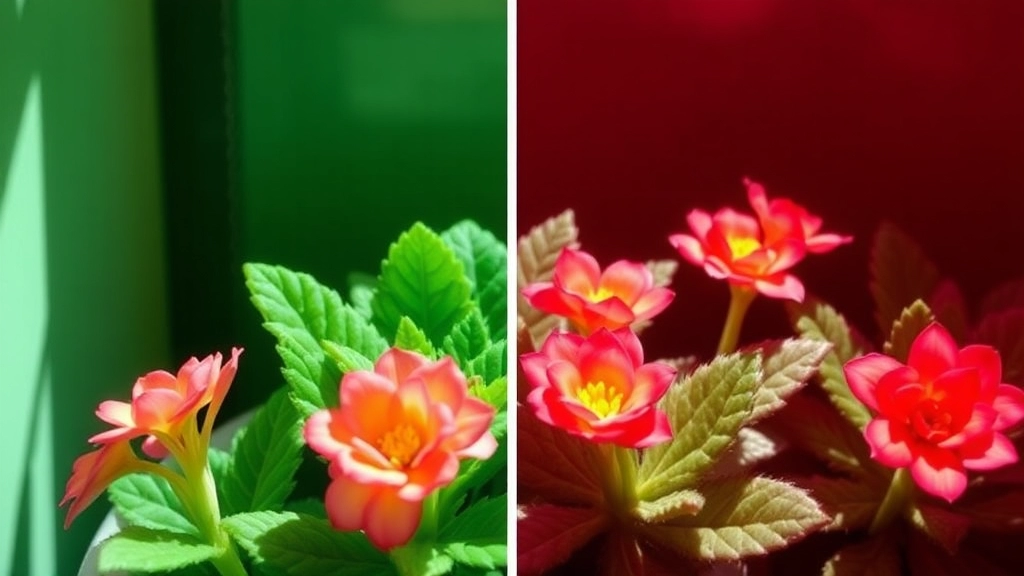
So, you’ve got your orange-flowering Kalanchoe, and now you’re wondering, “How much light does it really need?”
Let’s break it down.
Bright, Indirect Light is Key
Kalanchoes thrive in bright, indirect sunlight.
- Direct sunlight can scorch their leaves.
- Too little light? That’s a one-way ticket to leggy, weak plants.
Best Spots in Your Home
- South-facing windows are a golden spot for your Kalanchoe.
- If you don’t have that, try east-facing windows—they offer gentle morning light.
Signs Your Kalanchoe is Happy or Not
Keep an eye on your plant.
- Happy Kalanchoe: Bright green leaves, lots of blooms.
- Unhappy Kalanchoe: Yellowing leaves or stretching towards the light.
Seasonal Changes Matter
Remember, the intensity and duration of sunlight changes with the seasons.
- In winter, you might need to move your Kalanchoe closer to the light.
- In summer, be cautious of too much direct sun.
Quick Tips for Optimal Light
- Rotate your plant every few weeks for even growth.
- If you notice it stretching, it’s time to boost its light exposure.
Best Soil Mixes and Drainage Tips for Succulents
As we delve into the essentials of caring for Orange-Flowering Kalanchoe, understanding the right soil mix and drainage techniques is crucial for their health and vibrancy.
Why Soil Matters
Choosing the right soil for your Kalanchoe is vital. A well-draining soil mix prevents water retention, which can lead to root rot. Here are some key considerations:
- Cactus Mix: A pre-packaged cactus mix works well, as it is designed specifically for succulents.
- DIY Mix: If you prefer making your own, combine:
- 50% potting soil
- 25% coarse sand or perlite
- 25% pumice or gravel
This blend ensures aeration and drainage, both crucial for Kalanchoe health.
Drainage Tips
Good drainage is non-negotiable when it comes to growing Kalanchoe. Here are some effective strategies:
- Pot Selection: Use pots with drainage holes. Terracotta pots are ideal as they absorb excess moisture.
- Layering: Before adding soil, place a layer of small stones or gravel at the bottom of the pot to further enhance drainage.
- Check for Compaction: Ensure your soil isn’t too compacted, as this can inhibit water flow.
Signs of Soil Issues
Keep an eye out for signs that your soil may not be serving your Kalanchoe well:
- Yellowing leaves can indicate overwatering.
- Stunted growth may suggest poor soil aeration.
By selecting the right soil mix and ensuring proper drainage, you set the stage for your Orange-Flowering Kalanchoe to thrive. For more detailed care tips, check out our care tips for Orange Florist Kalanchoe and learn how to deadhead Kalanchoe flowers for continuous blooming.
Watering Requirements: Avoiding Root Rot
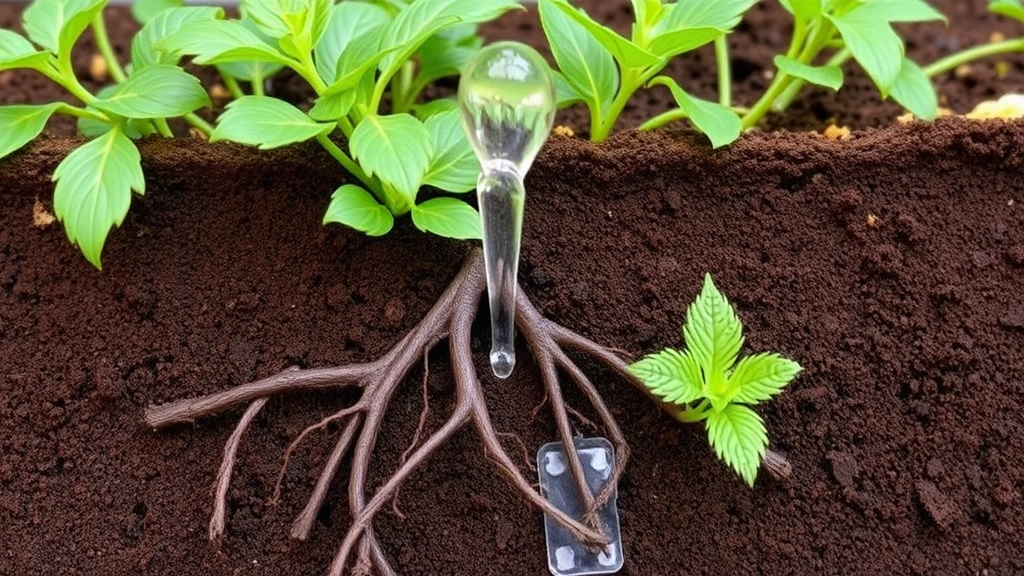
One of the most common concerns for Kalanchoe enthusiasts is the risk of root rot. This issue can devastate your orange-flowering Kalanchoe, so understanding its watering needs is essential for thriving plants.
How Much Water Do Kalanchoes Need?
Kalanchoes are succulents, which means they store water in their leaves. This adaptation allows them to survive in arid conditions. Here’s how to ensure you’re watering them correctly:
- Soil Check: Always check the moisture level of the soil before watering. Stick your finger about an inch deep into the soil. If it feels dry, it’s time to water.
- Watering Frequency: During the growing season (spring and summer), water your Kalanchoe every 2-3 weeks. In the dormant season (autumn and winter), reduce this to once a month.
- Watering Method: Water thoroughly until you see it draining from the bottom of the pot. This ensures the roots get adequate moisture without sitting in water.
Signs of Overwatering
Recognising the signs of overwatering can save your plant:
- Yellowing Leaves: If the leaves turn yellow and mushy, it’s a sign of root rot.
- Wilting: Surprisingly, overwatered plants may also appear wilted.
- Foul Odour: A smell coming from the soil can indicate rotting roots.
Preventing Root Rot
To keep your orange-flowering Kalanchoe healthy, consider these tips:
- Well-Draining Soil: Use a soil mix designed for succulents, which typically includes sand and perlite for better drainage.
- Pot Choice: Choose pots with drainage holes to prevent water accumulation.
- Humidity Control: Keep your Kalanchoe in a location with low humidity, as high humidity can increase the risk of rot.
Fertilization Guide for Healthy Blooming
When it comes to keeping your orange-flowering Kalanchoe vibrant and blooming, fertilization plays a pivotal role. Many plant enthusiasts often wonder, “How do I ensure my Kalanchoe receives the nutrients it needs?”
Choosing the Right Fertilizer
Opt for a balanced, water-soluble fertiliser that is specifically formulated for succulents. This ensures your Kalanchoe gets the nutrients it craves without the risk of over-fertilisation.
- NPK Ratio: Look for a fertiliser with an NPK ratio of 10-10-10 or 20-20-20.
- Liquid Fertiliser: A liquid option allows for easy application and quick absorption.
- Organic Options: Consider organic fertilisers, such as fish emulsion or seaweed extract, for a natural boost.
When to Fertilize
Timing is crucial for effective fertilisation.
- Growing Season: Fertilise every 4-6 weeks during the spring and summer months when the plant is actively growing.
- Dormant Period: Reduce or eliminate fertilisation in autumn and winter, as Kalanchoe enters a resting phase.
Application Tips
Proper application can make all the difference in your plant’s health.
- Dilution: Always dilute the fertiliser to half the recommended strength to avoid burning the roots.
- Watering First: Water your Kalanchoe before applying fertiliser. This helps prevent root shock.
- Even Distribution: Apply the fertiliser evenly around the base of the plant, avoiding direct contact with the leaves.
Monitoring Plant Health
Keep an eye on your Kalanchoe’s response to fertilisation.
- Leaf Colour: Healthy leaves should be vibrant green. Yellowing leaves may indicate over-fertilisation.
- Blooming: If your Kalanchoe is blooming profusely, you’re likely on the right track!
Common Issues and Pests Affecting Kalanchoe
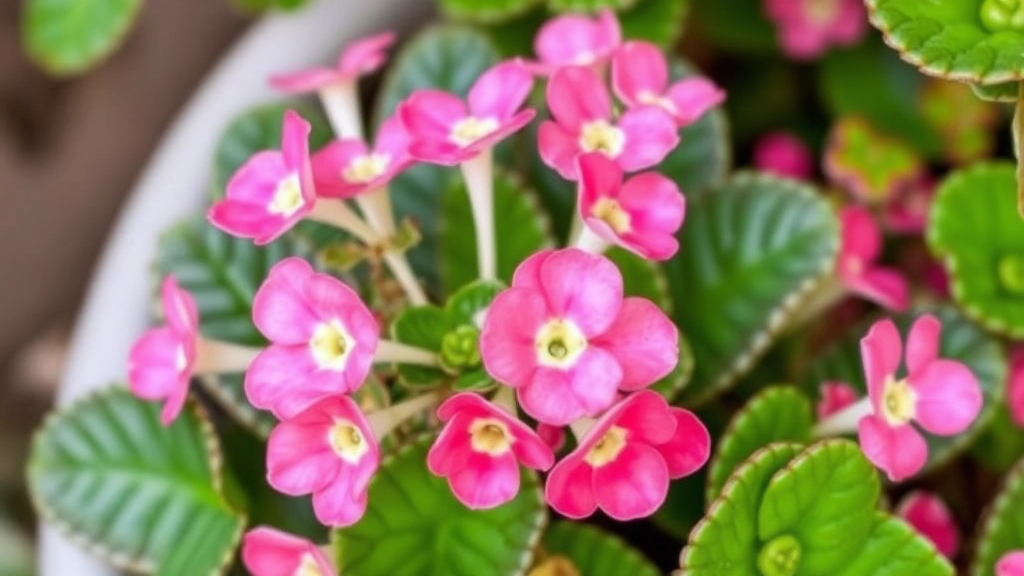
So, you’ve got your lovely orange-flowering Kalanchoe thriving, but what happens when trouble strikes?
Let’s chat about some common issues and pests that can pop up, and how to tackle them head-on.
1. Leaf Dropping
- Why it happens: Usually a sign of stress, often from overwatering or too little light.
- What to do: Check your watering schedule and ensure it’s getting enough light.
2. Yellowing Leaves
- Why it happens: This could be a nutrient deficiency or root rot.
- What to do: If it’s root rot, you’ll need to repot. If it’s nutrients, a little fertiliser might do the trick.
3. Pests: Mealybugs and Aphids
- Why they’re a problem: These little critters suck the life out of your plant.
- What to do:
- Wipe them off with a damp cloth.
- Use insecticidal soap for a more stubborn infestation.
4. Powdery Mildew
- Why it happens: Too much humidity and not enough airflow can lead to this fungal issue.
- What to do: Improve air circulation and avoid overhead watering. If it’s already there, a fungicide can help.
5. Root Rot
- Why it happens: Overwatering is the main culprit here.
- What to do: Ensure your pot has drainage holes and let the soil dry out between waterings.
Quick Tips to Prevent Issues:
- Regularly inspect your Kalanchoe for any signs of trouble.
- Maintain proper watering habits to avoid stress.
- Keep the environment balanced – not too humid, not too dry.
As we explore the vibrant world of Orange-Flowering Kalanchoe, understanding propagation methods is essential for expanding your collection or sharing the beauty with friends and family.
Many plant enthusiasts often wonder how to grow more of these stunning succulents without purchasing new ones. Propagation allows you to create new plants from existing ones, ensuring you can enjoy their cheerful blooms year after year.
Methods of Propagation
Leaf Cuttings
Select a healthy leaf from your Kalanchoe.
Allow the cut end to dry for a few hours to form a callus.
Place the leaf in well-draining soil, ensuring it’s upright.
Water lightly and keep in bright, indirect light.
Stem Cuttings
Cut a healthy stem, ideally around 4-6 inches long.
Remove the lower leaves to expose the nodes.
Let the cut end dry for a day.
Plant the cutting in soil, ensuring the nodes are buried.
Water sparingly until roots develop.
Offsets
Some Kalanchoe varieties produce offsets or “pups.”
Gently separate the offsets from the main plant.
Replant them in their own pots with a suitable soil mix.
Water lightly and provide bright, indirect light.
Best Practices for Successful Propagation
Timing: Spring is the ideal season for propagation, as the plant is actively growing.
Environment: Maintain a warm and humid environment to encourage root development.
Patience: It may take a few weeks for roots to form, so be patient and avoid overwatering.
By employing these propagation techniques, you can enjoy a thriving collection of Orange-Flowering Kalanchoe, each one a testament to your gardening skills. For more detailed guidance, you can check out this [Kalanchoe Panamensis Propagation Guide](https://planthq.org/kalanchoe-panamensis-propagation-guide-tips-and-methods/) or learn about [How to Propagate Kalanchoe Tomentosa](https://planthq.org/how-to-propagate-kalanchoe-tomentosa-stepbystep-guide/).
Seasonal Care: Indoor vs. Outdoor Growth
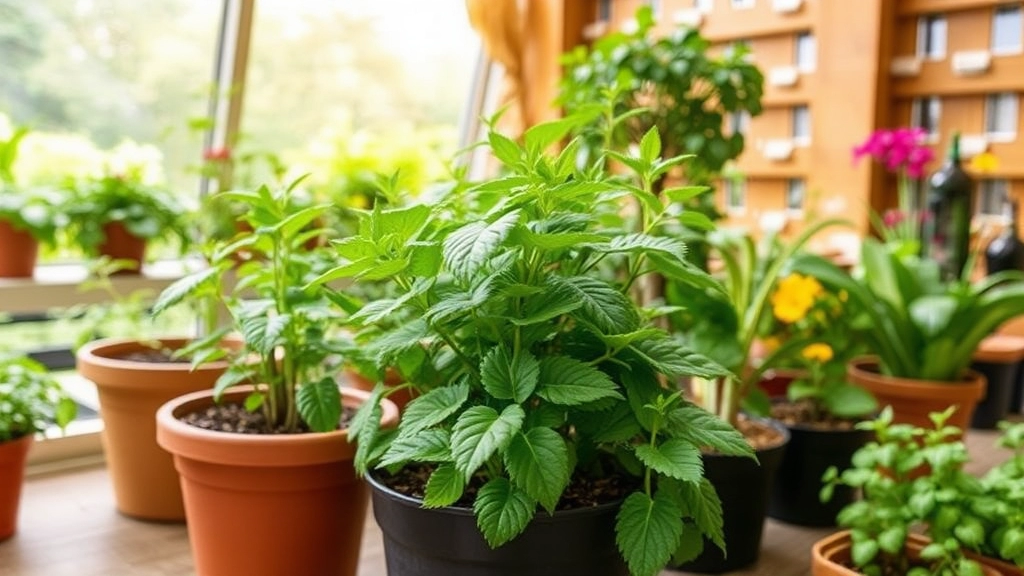
So, you’ve got your orange-flowering Kalanchoe and you want it to thrive all year round, right? The seasonal care for these beauties can differ quite a bit depending on whether they’re indoors or outdoors. Let’s break it down!
Indoor Care
When it comes to indoor growth, your Kalanchoe needs a bit of TLC to keep it blooming beautifully.
- Light: Position your plant near a sunny window. They love bright, indirect light. Too much direct sunlight can scorch those lovely leaves.
- Temperature: Keep it cozy! Ideal temps are between 15°C to 24°C. Avoid chilly drafts or heat from radiators.
- Humidity: Kalanchoes prefer drier air. If your home has high humidity, consider using a dehumidifier or placing a fan nearby.
- Watering: In winter, reduce watering. The plant will enter a dormant phase and won’t need as much moisture.
Outdoor Care
If you’re lucky enough to have a garden, your Kalanchoe can flourish outside during the warmer months.
- Sunlight: Choose a spot with plenty of sunlight. Morning sun with some afternoon shade works wonders.
- Soil: Make sure the soil is well-draining. Sandy or gritty mixes are perfect for outdoor Kalanchoes.
- Temperature: They can handle a bit of heat but be cautious of frost. Bring them indoors if temperatures dip below 10°C.
- Watering: During the growing season, keep the soil slightly moist but never soggy.
Using Orange Kalanchoe for Home Décor or Garden Design
Are you looking to add a splash of vibrant colour to your home or garden? The Orange-Flowering Kalanchoe is an excellent choice for both indoor and outdoor spaces.
Versatile Décor Options
This succulent’s striking orange blooms can brighten up any setting. Here are some creative ways to incorporate Kalanchoe into your décor:
- Table Centrepieces: Place a pot of Orange Kalanchoe on your dining or coffee table for an eye-catching focal point.
- Windowsills: Their compact size makes them perfect for brightening up windowsills, allowing natural light to enhance their vibrant colours.
- Hanging Baskets: Consider using hanging planters to display Kalanchoe, creating a cascading effect that adds depth to your space.
- Mixed Plant Arrangements: Pair them with other succulents or leafy plants for a stunning contrast in colours and textures.
Outdoor Garden Design
If you’re thinking of using Kalanchoe outdoors, here are some tips:
- Rock Gardens: Their drought-resistant nature makes them ideal for rock gardens where they can thrive with minimal care.
- Borders and Edges: Use them as border plants along pathways or flower beds to create a lively edge.
- Container Gardens: Combine them in larger pots with other seasonal flowers for a vibrant display.
Seasonal Considerations
When using Orange Kalanchoe in your décor, keep in mind their seasonal needs.
FAQs about Orange Flower Succulent Kalanchoe
What kind of light does an orange-flowering Kalanchoe need?
Kalanchoes thrive in bright, indirect sunlight. Direct sunlight can scorch their leaves, while too little light can lead to leggy, weak plants.
Where is the best place to position my Kalanchoe indoors?
South-facing windows are ideal, but east-facing windows with gentle morning light can also work well.
How can I tell if my Kalanchoe is happy?
A happy Kalanchoe will have bright green leaves and lots of blooms. If the leaves are yellowing or the plant is stretching towards the light, it may need more light.
How often should I water my Kalanchoe?
During the growing season (spring and summer), water every 2-3 weeks. In the dormant season (autumn and winter), reduce watering to once a month. Always check the soil moisture before watering.
What are the signs of overwatering in Kalanchoe?
Overwatering can cause yellowing leaves, wilting, and a foul odour from the soil, indicating root rot.
How can I prevent root rot in my Kalanchoe?
Use well-draining soil, choose pots with drainage holes, and keep the plant in a location with low humidity to avoid root rot.
What common pests affect Kalanchoe plants?
Mealybugs and aphids are common pests. They can be wiped off with a damp cloth or treated with insecticidal soap.
How do I deal with powdery mildew on my Kalanchoe?
Improve air circulation and avoid overhead watering. If powdery mildew is already present, a fungicide can help.
Can I grow my Kalanchoe outdoors?
Yes, Kalanchoes can be grown outdoors during the warmer months. Choose a spot with plenty of sunlight, ensure well-draining soil, and bring the plant indoors if temperatures drop below 10°C.
What seasonal care does a Kalanchoe need indoors?
Indoors, Kalanchoes need bright, indirect light, temperatures between 15°C to 24°C, drier air, and reduced watering during winter.
How do I ensure my Kalanchoe gets even growth?
Rotate your plant every few weeks to ensure even growth and prevent it from stretching towards the light.
References
-
Kalanchoe Plant Care: How To Grow A Kalanchoe
-
How to Grow Kalanchoe Plants Indoors
-
Kalanchoe: How to Grow and Care for Kalanchoe Plants
